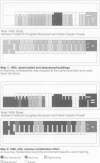Abstract
OBJECTIVES: One factor contributing to the decay of inner-city areas, and to consequent excess mortality, is the massive loss of housing. This report studied the effects of a redevelopment project on social functioning in an inner-city community. METHODS: This ethnographic study included the following elements: a longitudinal study of 10 families living in renovated housing, repeated observations and photographing of the street scene, focus groups, and informal interviews with area residents. The project was located in the Bradhurst section of Harlem in New York City and was focused on a redevelopment effort sponsored by local congregations. RESULTS: Those who were able to move into newly renovated housing found that their living conditions were greatly improved. Neighborhood revitalization lagged behind the rehabilitation of individual apartment houses. This uneven redevelopment was a visual and sensory reminder of "what had been." Residents missed the warmth and social support that existed in Harlem before its decline. CONCLUSIONS: Rebuilding damaged housing contributes greatly to the well-being of inner-city residents. The current pace and scope of rebuilding are insufficient to restore lost vitality.
Full text
PDF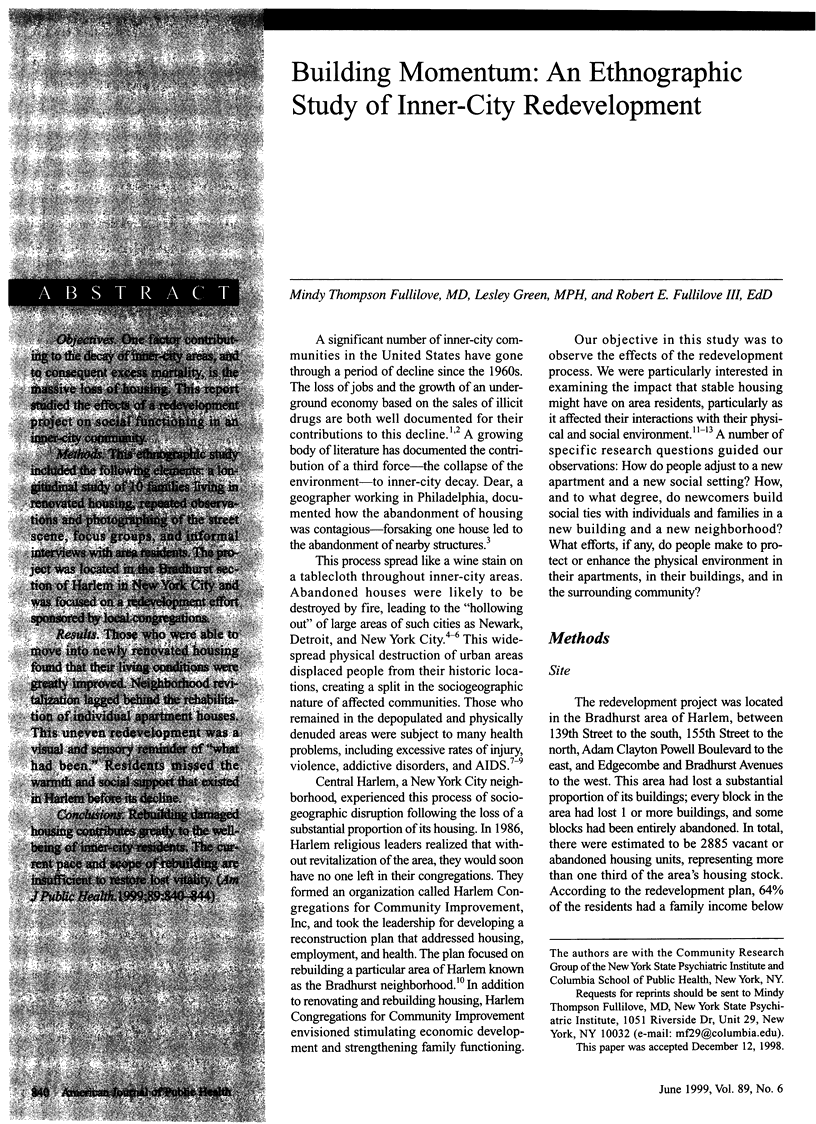
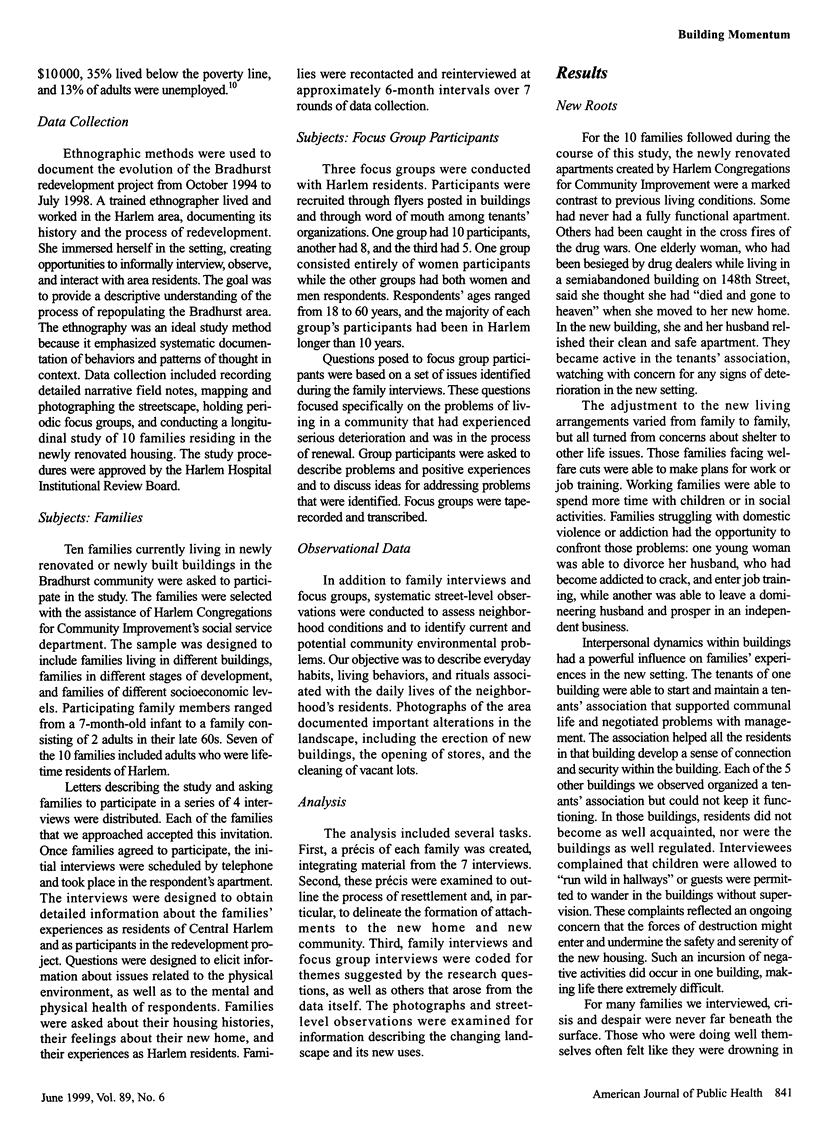
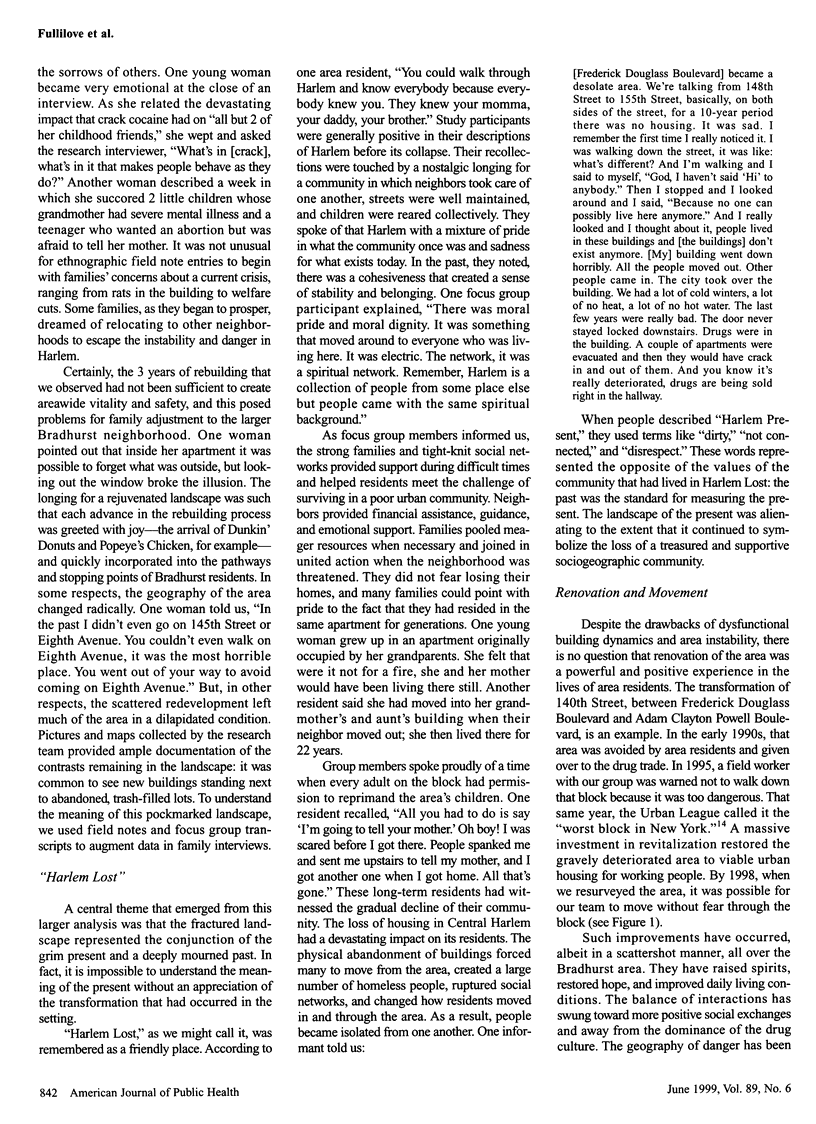
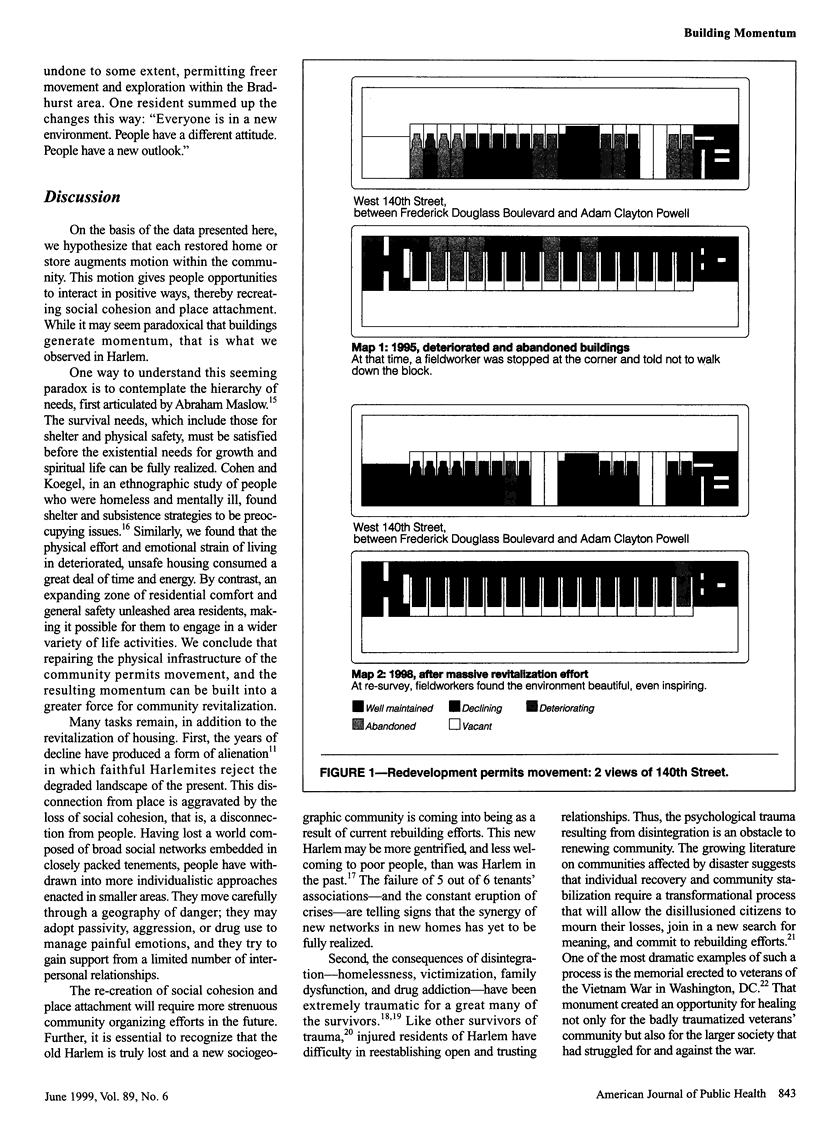
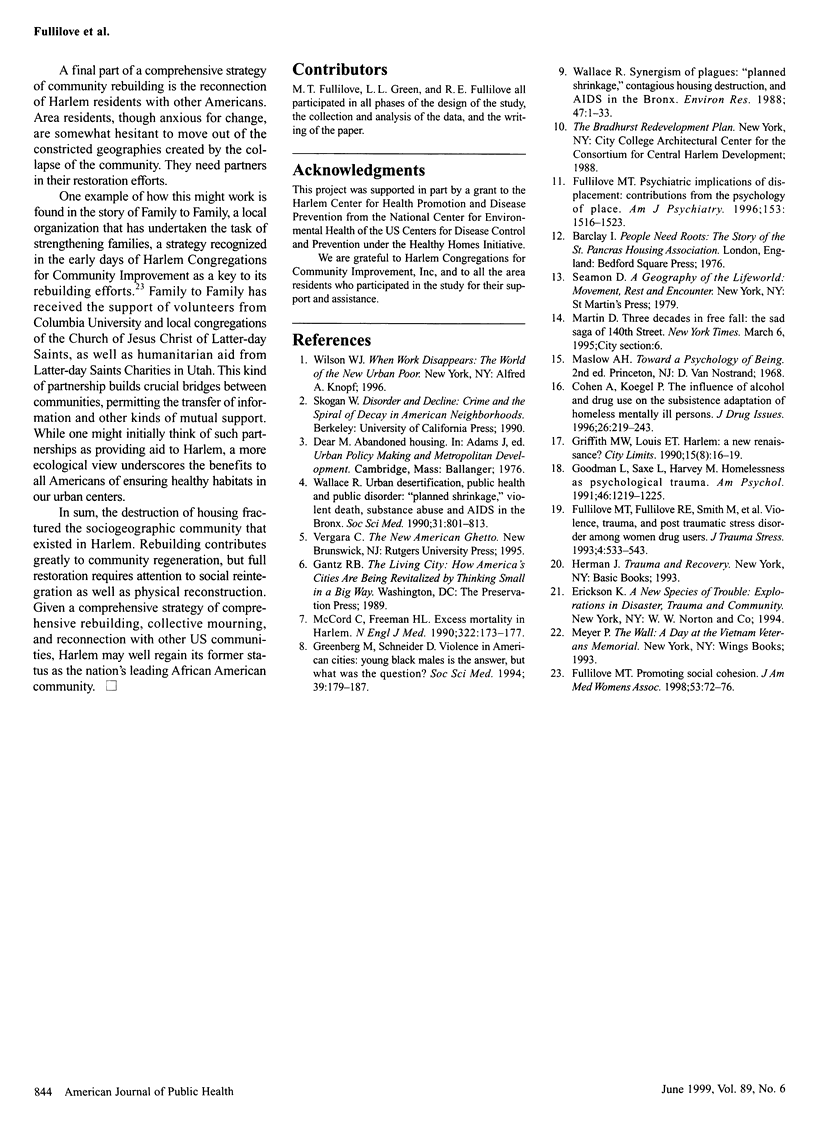
Images in this article
Selected References
These references are in PubMed. This may not be the complete list of references from this article.
- Fullilove M. T. Promoting social cohesion to improve health. J Am Med Womens Assoc. 1998 Spring;53(2):72–76. [PubMed] [Google Scholar]
- Fullilove M. T. Psychiatric implications of displacement: contributions from the psychology of place. Am J Psychiatry. 1996 Dec;153(12):1516–1523. doi: 10.1176/ajp.153.12.1516. [DOI] [PubMed] [Google Scholar]
- Goodman L., Saxe L., Harvey M. Homelessness as psychological trauma. Broadening perspectives. Am Psychol. 1991 Nov;46(11):1219–1225. doi: 10.1037//0003-066x.46.11.1219. [DOI] [PubMed] [Google Scholar]
- Greenberg M., Schneider D. Violence in American cities: young black males is the answer, but what was the question? Soc Sci Med. 1994 Jul;39(2):179–187. doi: 10.1016/0277-9536(94)90326-3. [DOI] [PubMed] [Google Scholar]
- McCord C., Freeman H. P. Excess mortality in Harlem. N Engl J Med. 1990 Jan 18;322(3):173–177. doi: 10.1056/NEJM199001183220306. [DOI] [PubMed] [Google Scholar]
- Wallace R. A synergism of plagues: "planned shrinkage," contagious housing destruction, and AIDS in the Bronx. Environ Res. 1988 Oct;47(1):1–33. doi: 10.1016/s0013-9351(88)80018-5. [DOI] [PubMed] [Google Scholar]
- Wallace R. Urban desertification, public health and public order: 'planned shrinkage', violent death, substance abuse and AIDS in the Bronx. Soc Sci Med. 1990;31(7):801–813. doi: 10.1016/0277-9536(90)90175-r. [DOI] [PubMed] [Google Scholar]



